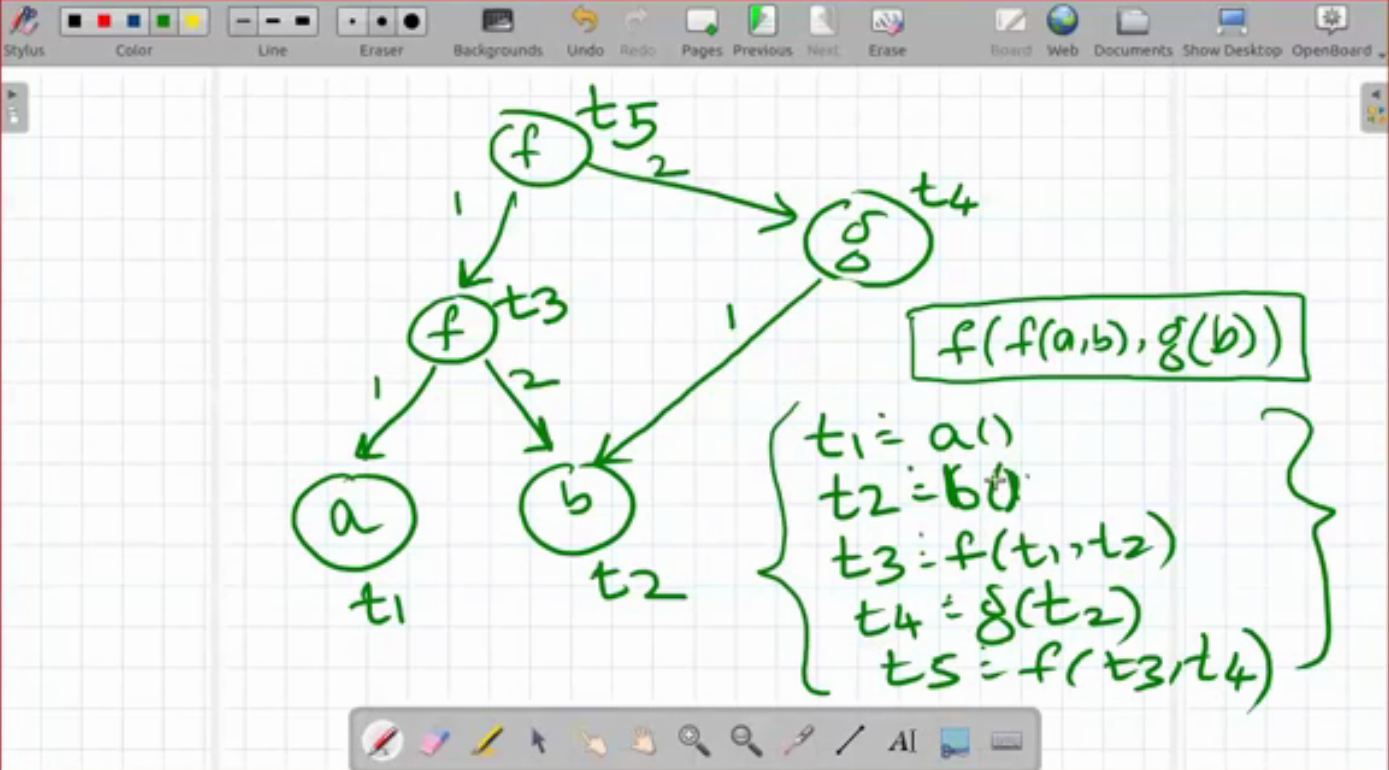PoPL Lecture 7
In class
- We know the Well-foundedness Property of Inductive Terms: There is no inductive term
Ts.t.Tis a proper subterm of itself:- So we can’t have terms like
T = g(T) -
But we might a term like that for streams
g←┐ Circular terms └─┘ - The following is seemingly an aside. Skip if you need to.
-
Consider the following definition
TREE DAG f f ₁/ \₂ ( ) a a a ----- ----- f a a f a aIn the DAG, the ‘a’ is shared. It is like
(define (a) (list 'a)) (define (f t1 t2) (list 'f t1 t2)) (let ([t (a)]) (f t t))But in the tree form, it is more
(let ([t1 (a)] [t2 (a)]) (f t1 t2)) ;; note that t1 and t2 are different > (eq? (a) (a)) #f > (equal? (a) (a)) #tTerm Graphs
-
- So we can’t have terms like
And defining them in terms of equations
- Term Graphs: A term graph over a signature Σ is a structure <V, h, →> where
- V is a set of vertices
- h: V → Σ (head)
- → ⊆ V x N₁ x V (v,i,v’ written as v-i->v’)
- if h(v) ∈ Σ⁽ⁿ⁾, then v has exactly n out-edges. For each i: 1≤i≤n, there is exactly⁾, then v has exactly 1 out-edge labelled i.
- Defining some notation:
- if h(v) = f and
- f ∈ Σ⁽ⁿ⁾ and
- v -i-> v_i for 1≤i≤n
-
Then, we write this as
v ≅ f(v₁ … v_n) (≅ is actually ‘=’ with a dot on top)
-
Consider examples:
(f)t₁ v = {t₁ t₂ t₃} │ t₂ ≅ a() ₁/ \₂ h = { t₁ → f │ t₃ ≅ b() t₂(a) (b)t₃ t₂ → a │ t₁ ≅ f(t₂ t₃) G=<v,h,→> t₃ → b } │ ───────────── │ this is a term │ graph written down │ as a set of equations f has arity 2, so it needs 2 out-edges We can also have (g)←┐ └───┘For another example, we can see:

Path/Position
- From the term graph above, we can write something like t₅ ─²→ t₄ ─¹→ t₂
- A simpler way to do that is t₅ ─²¹→ t₂
- This ²¹ is called the path/position
- The path
21takes t₅ to t₂ -
REF rule:
v ─[]-> vTRANS rule:
v' ─[p]→ v''andv ─[i]→ v', thenv ─[i.p]→ v'' -
Now, also:
if
v ─[p]→ randv ─[p]→ s, thenr == s - TODO after this
- Position space
- paths == position
- pos(t1): all paths to all accessible vs.
- Term can be reconstructed from pos v and → ∑
-
Position space: set of positions p, prefix closed: for all terms of the set, each prefix is also a term in the set. Motivation: Eliminating v
Basically defines term v, without the v. 1 Position space defines a term graph’s subtree.
- Behaviour: mapping from terms to ∑, but upwards complete. Interaction.
- term over Σ is a behavious over Σ